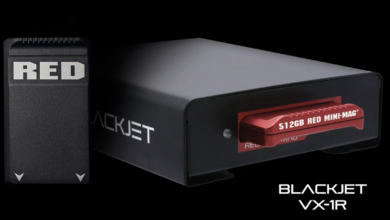Lucent Technologies: The Rise and Fall of an Iconic Telecom

Lucent Technologies had its origins as part of the historic Bell Labs, which was the R&D division of AT&T. In 1996, as AT&T was downsizing into a smaller company focused on telecommunications, it spun off Lucent as an independent company focused on enterprise and communications technology.
Headquartered in Murray Hill, New Jersey, Lucent became a leading innovator in areas like optical networking, VoIP, silicon chips, software, and managed services. Some of Lucent’s well-known products included the 5ESS telephone switch, Voice over IP technology, and a groundbreaking 1 terabit per second optical fiber network.
Lucent grew rapidly through the 1990s, benefiting from demand for internet and telecom infrastructure during the dotcom boom. By the late 1990s, it had over 150,000 employees and was the most widely held technology stock. However, when the tech bubble collapsed in 2000, Lucent suffered major losses and layoffs. This led to a tumultuous period with multiple re-organizations and mergers over the next decade, with Alcatel and Nokia both eventually acquiring Lucent’s assets. Despite this difficult period, Lucent’s Bell Labs origins and pioneering innovations left a significant legacy on communications technology.
Origins and Spin-Off from AT&T
Lucent Technologies has its origins as part of the historic Bell Labs, the R&D division of AT&T. Though known for innovations like the transistor, laser, and information theory, by the 1980s and 90s AT&T was facing new competitive challenges in the telecom industry.
In 1995, AT&T made the decision to spin off its systems and technology units into a new separate company focused on being a global leader in communications systems and software. This new company was named Lucent Technologies.
Leadership for the new spin-off came from veteran AT&T executives like Henry Schacht, who was appointed as Lucent’s first chairman and CEO. The vision was to take Bell Labs and AT&T’s technology strengths and reorient them towards the booming telecom equipment market. Lucent aimed to be a pioneering innovator of the technology enabling the communications networks of the future.
Major Products and Innovations
As a technology powerhouse and innovator, Lucent Technologies was responsible for developing many groundbreaking products that shaped the telecommunications industry. The research and innovations coming out of Bell Labs, Lucent’s research arm, were particularly impactful.
Some of Lucent’s most notable products included:
- 5ESS switch – This family of digital switches, launched in 1982 while Lucent was still part of AT&T, became instrumental in transitioning telephone networks from analog to digital. The 5ESS switch enabled new capabilities like call waiting, call forwarding, speed dialing, and custom calling services. It was a workhorse product for Lucent and was installed in many telephone company central offices.
- Optical networking – Lucent pushed the boundaries of fiber optic technology. Products like the WaveStar OLS and Metro core networking platforms provided high-capacity, scalable optical networking capabilities to telecom providers. Lucent’s optical innovations enabled the rapid growth of the internet.
- Lucent Definity – This business telephone system was popular with enterprises in the 1990s. It enabled advanced call handling and was one of Lucent’s flagship product lines after the AT&T breakup.
- Lucent Partner – An early advanced IP business phone system launched in 1997. It converged VOIP with traditional phone network switching capabilities.
- Inferno OS – This distributed operating system developed at Bell Labs was designed for modular real-time systems and portable devices. It featured innovative capabilities like transparent migration of running processes.
Lucent Technologies maintained Bell Labs’ reputation as an innovation pioneer. The optical, wireless, and software breakthroughs developed there helped usher in our modern digital world.
Growth and Expansion
In the 1990s, Lucent Technologies experienced rapid growth and expansion, establishing itself as a leader in the telecommunications equipment industry. Lucent focused heavily on research and development, introducing pioneering products like the 5ESS digital switch and expanding into new markets.
Several key acquisitions aided Lucent’s growth. In 1996, Lucent acquired Livingston Enterprises for $1.8 billion, gaining access to software for internet routers and switches. In 1997, Lucent bought Octel Communications, a supplier of voice mail systems, for $1.8 billion. The same year, Lucent acquired the data networking company Yurie Systems for $1 billion.
Lucent also expanded globally, establishing operations across North America, Asia Pacific, Europe, South America, and the Middle East. The company won major contracts in China, working with providers like China Telecom to upgrade their networks.
Revenues rose rapidly during this period of growth. In 1996, Lucent’s first fiscal year after spinning off from AT&T, the company reported revenues of $26 billion. By 1999, Lucent’s annual revenues had climbed to over $38 billion. The company became one of the most widely held stocks and a key player in the telecom equipment space. At its peak market valuation of $258 billion in 1999, Lucent was the most valuable company in the United States.
The Tech Bubble Collapse
Lucent Technologies enjoyed rapid growth and success during the dot-com and technology boom of the late 1990s. The company benefited from heavy investments by startups and new internet companies that were its major customers for telecommunications equipment.
However, this heavy reliance on dot-com customers proved to be a vulnerability when the tech bubble burst in 2000-2001. As many internet startups went out of business, demand for Lucent’s products declined sharply. The company suffered from overexpansion during the boom years, having grown to over 150,000 employees.
When the technology bubble collapsed in 2000 and 2001, Lucent was left exposed. The company saw massive declines in sales and revenue, with losses of over $16 billion in 2001 alone. Lucent’s stock price plunged from a peak of $84 in 1999 down to just $6.45 in 2001. The company was forced to lay off nearly half its workforce to cut costs and stanch the bleeding.
The tech bubble collapse severely damaged Lucent’s business, necessitating a major reorganization and restructuring in order to survive. It was an illustration of the risks of relying too heavily on dot-com customers and overexpanding during boom times. Lucent provides a cautionary example for tech companies on the dangers of hot market bubbles.
Business Reorganization and Mergers
After the dot-com collapse, Lucent underwent a major restructuring and refocused on its core networking business. Under the leadership of CEO Patricia Russo, Lucent sold off non-core business units and merged with others to streamline operations.
In 2001, Lucent spun off its microelectronics division as Agere Systems. The following year, it merged its optical networking groups with those of Alcatel, forming Alcatel-Lucent. Lucent also sold its wireless infrastructure business to Colubris Networks.
By 2003, Lucent had returned to profitability after reducing its workforce by over 50% and focusing on its core business of designing and developing networking systems and software. The company concentrated on providing next-generation networks to telecom service providers. This included products for broadband access, optical networking, and voice-over-IP systems.
The mergers and sales enabled Lucent to eliminate redundancy, reduce costs, and center its business around its networking strengths in software and equipment. While this period marked the end of Lucent as a standalone company, the restructuring was crucial in salvaging and refocusing the business.
Acquisition by Alcatel
In 2006, Alcatel, the French telecommunications equipment company, acquired Lucent Technologies for $13.4 billion. This merger created a major new telecom player called Alcatel-Lucent. At the time, it was viewed as a necessary “merger of equals” as both companies were facing competitive pressures in the industry.
The combined company had over 80,000 employees and did business in 130 countries. By joining forces, Alcatel-Lucent could leverage greater economies of scale in R&D, manufacturing, and operations. Their product portfolio spanned voice, data, and video communication services and equipment, offering end-to-end networking solutions. This included IP networks, broadband access, optical networking, wireless networks, voice telephony, and applications.
However, the merger faced challenges in integrating the two companies’ distinct cultures. Lucent had a more fast-paced, entrepreneurial culture whereas Alcatel operated in a more deliberate, hierarchical manner. There were clashes between American and French management styles. The merged company struggled with organizational inefficiencies which led to losses in market share. While the merger gave Alcatel-Lucent enhanced capabilities, realizing the full benefits of the integration took time.
Later History as Alcatel-Lucent
After the merger with Alcatel in 2006, the combined company Alcatel-Lucent initially struggled to integrate the two businesses and achieve synergies. There were cultural clashes between the American and French sides of the business. However, by 2008 Alcatel-Lucent started to see some positive results from the merger.
Under CEO Ben Verwaayen, Alcatel-Lucent focused on next-generation IP networking and wireless technologies as key growth areas. This included 4G/LTE wireless networking technology. While traditional hardware and fixed-line businesses declined, IP networking and ultra-broadband access were growth drivers.
Despite some promising new products, Alcatel-Lucent continued to face competitive challenges from the likes of Cisco, Huawei, and Ericsson. The company pursued multiple restructuring initiatives to cut costs and simplify operations. There were additional leadership changes to drive the company forward. However, Alcatel-Lucent struggled to keep pace with competitors and achieve sustainable profitability.
By the early 2010s, the company was managing over $10 billion in debt. While it maintained its position as a major telecom equipment supplier, it lacked the scale and financial strength of some rivals. Alcatel-Lucent continued to invest in next-generation network technologies like IP routing, broadband access, network management software, and cloud capabilities. But ultimately it could not remain independent and needed a larger corporate parent to survive.
Acquisition by Nokia
In April 2015, Nokia announced its intent to purchase Alcatel-Lucent for €15.6 billion in an all-stock deal. This acquisition brought together two pioneering companies with a long history of telecommunications leadership and innovation.
The merger created a major force in next-generation network technology and services. It enabled Nokia to expand its capabilities in fixed and wireless networking, IP routing, optical networks, and software-defined networking. Alcatel-Lucent provided complementary strengths in broadband access, analytics, cloud technologies, and Internet of Things platforms.
The deal closed in January 2016, with Nokia buying all of Alcatel-Lucent’s outstanding shares. Nokia rebranded the company as Nokia Corporation, operating Nokia Networks and Nokia Technologies divisions. The purchase strengthened Nokia’s financial position and boosted its research, innovation, and overall competitiveness.
The integration process took over a year, as Nokia worked to unite the companies’ operations, product portfolios, partners, and customers. There were some challenges in merging two complex organizations and product lines. However, the deal ultimately gave Nokia the end-to-end capabilities it needed to deliver complete network solutions. With Alcatel-Lucent on board, Nokia was well positioned for 5G mobile networks and next-generation infrastructure.
Legacy and Impact
Lucent Technologies had a profound impact on the telecommunications industry over its 15-year existence as an independent company. Though its reign was relatively short-lived, Lucent introduced numerous innovations that would shape the evolution of networking and connectivity.
Founded on the backbone of Bell Labs, Lucent inherited a rich history of pioneering research and development. bell Labs was responsible for breakthroughs like the transistor, laser, communications satellites, cellular technology, and fiber optic cables. This culture of innovation continued under Lucent, with developments like voice-over IP, software-based business phone systems, and high-speed DSL broadband.
Many consider Lucent’s 5ESS digital switch one of the most successful telecom products ever, with over 100 million lines installed globally. The rapid growth of the internet can also be partially attributed to Lucent’s optical networking systems which provided the infrastructure.
Though Lucent collapsed during the dot-com bubble, its technology and talent lived on through acquisitions. Alcatel-Lucent inherited most of the company before being bought out by Nokia. Patents and innovations from Lucent are now found across the product portfolios of these merged telecom giants. Bell Labs also continues to operate as Nokia Bell Labs, retaining Lucent’s original heritage.
Lucent’s advancements in optical, wireless, software, and voice technologies paved the way for our modern hyper-connected world. Though no longer an independent entity, its engineering DNA persists through the systems powering global communications.





